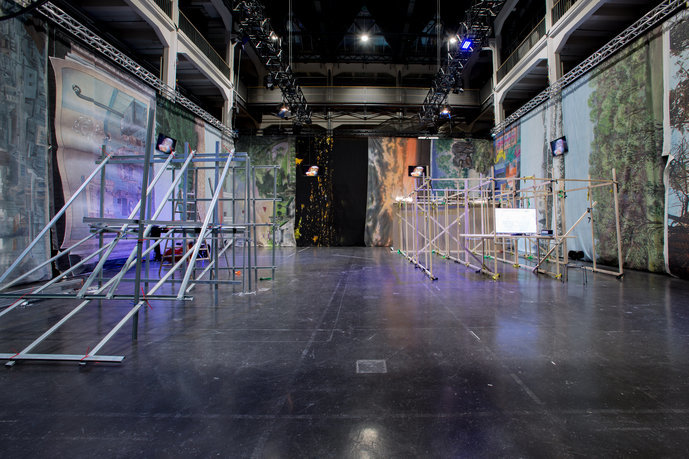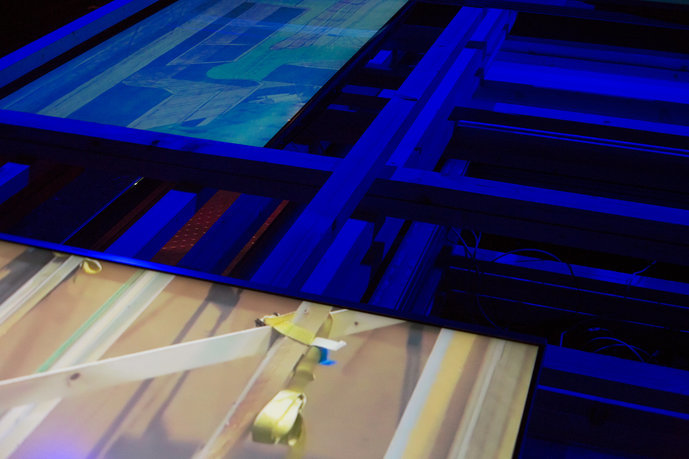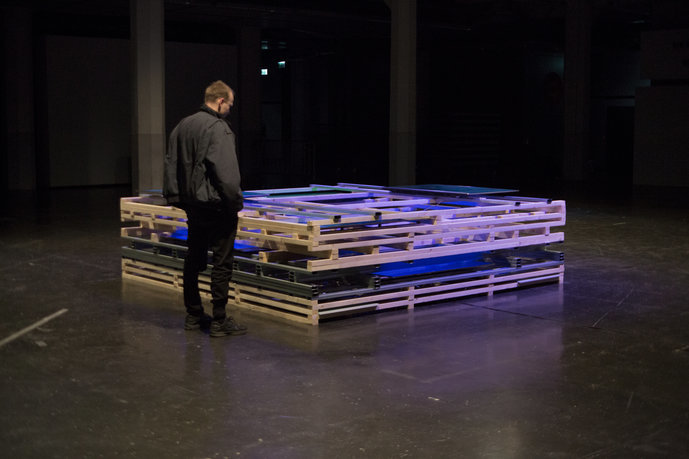

Room situation of the test (© Alper Kazokoglu)


Installation view (© Alper Kazokoglu)


Installation view (© Alper Kazokoglu)
The format of the test is defined as the working method in Test Drive. The function of the test is understood as an undefined, unproductive and inconclusive format that opposes ideas of efficiency and perfection. The potential of chance, repetition, interruption, failure and starting over is developed within this work form. In contrast to the classic understanding of the test, which serves to perfect an end product or a performance, the work is not dedicated to a clear goal and opens up to the idea of the unfinished. The process becomes the goal of aimless work. Likewise, conventional structures and hierarchies are overridden in Test Drive, where scenographic work is primarily performed. The open-ended character of the rehearsal does not require any text or dramaturgical concepts, allowing the space to become the starting point for the work.
The installation Test Drive consists of a four-channel video, sound, and a box construction (approx. 3.0 x 3.0 x 1.0 m) made of wood, steel profiles, plasterboard and screens. The differently arranged components of the display are superimposed in several layers, forming a support structure.
Alper Kazokoglu, born 1986, first studied architecture at Karlsruhe Institute of Technology and then scenography and exhibition design at the University of Design Karlsruhe. While studying architecture, he gained initial practical experience in self-initiated projects and took part in the "72 Hour Urban Action" architecture competition in Bat-Yam (Israel) in 2010, for which he and his team took first place. Since 2013 Alper Kazokoglu has been working on a project-related basis for the “studio umschichten” architecture studio. Numerous works were created in this context, including uO at Akademie Schloss Solitude, Stuttgart, or the publication The Dark Side at the Center for Contemporary Art, Warsaw. Alper Kazokoglu completed his studies at HfG Karlsruhe in spring 2018 with his diploma project Test Drive.